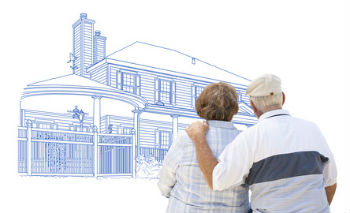Housing Options For Older Adults In North Carolina & The Triangle Area
Posted by Larry Tollen on Tuesday, November 24th, 2015 at 5:51pm.
 Housing options for older adults are plentiful these days, thanks in part to a number of advances in technology. The aging population has created a huge swell in demand for universal design. Contrary to popular belief, accessible homes are not just for handicapped or disabled individuals. Newer construction is trending toward greater flexibility and adaptability. Your home should not only be an enjoyable place to live, but also a comfortable place for your family and guests. There is a broad spectrum of housing types designed to accommodate different stages of life. There are much better options for aging adults today than there were 20 and 30 years ago. Senior citizens now have the ability to retain greater autonomy and independence while enjoying a high quality of life than in previous eras.
Housing options for older adults are plentiful these days, thanks in part to a number of advances in technology. The aging population has created a huge swell in demand for universal design. Contrary to popular belief, accessible homes are not just for handicapped or disabled individuals. Newer construction is trending toward greater flexibility and adaptability. Your home should not only be an enjoyable place to live, but also a comfortable place for your family and guests. There is a broad spectrum of housing types designed to accommodate different stages of life. There are much better options for aging adults today than there were 20 and 30 years ago. Senior citizens now have the ability to retain greater autonomy and independence while enjoying a high quality of life than in previous eras.
Planning For The Transition
There are an increasing number of adults who plan to move into assisted living down the road, but are not yet ready to move out of a traditional home. When medical challenges begin to limit mobility and restrict specific types of activities, it becomes necessary to think proactively about where it makes sense to live in the long term. In many cases, it is fine to stay put and make minor renovations to the existing home. When this is not a practical option, it is important to find a new dwelling that accommodates your specific needs. In either case, you will likely need to perform some accessibility retrofits, whether now or later down the road. This is getting easier to do, thanks in part to the increasing number of contractors who are trained to perform this kind of work.
Selecting a New Home
When it comes to selecting a home at any stage of life, I generally give “empty nesters” the same basic advice that I would give to a young newlywed couple. For instance, you may have heard the old adage about real estate: “location, location, location!” Think about how long you intend to stay in the home and what your next steps are likely to be. For example, it’s not uncommon for retired couples to look for a temporary home for one to two years before moving to another area. As you’ll hear me say often, it mainly comes down to making an offer at the right price. Factor in how much you’ll need to spend on upgrades for accessibility—and also consider the cost of having those upgrades reversed when you eventually decide to sell the home.
All that said, here are a few specific things to consider if accessibility is a major factor: If you anticipate having difficulty climbing stairs, a single-story home with a ground-level front door is most likely your best choice.
Stick with a central location with easy access to most major amenities and medical facilities. Avoid homes with stairs leading to the front door (though this can sometimes be remedied by modifying the property grading).
Consider a townhouse or condominium rather than a detached home, since owners’ associations typically handle the majority of property maintenance for you. (See also: What’s the Difference between a Townhome and a Condo—and Does it Really Matter?)
Do I Really Need to Move Right Now?
The fundamental decision of whether or not to move is going to depend on a lot of factors, but if you are in a good location, you may want to evaluate the feasibility of modifying the current home to meet your changing lifestyle needs. For those who strongly desire to stay in the existing home for at least a few more years, there are a number of improvements that can make the home considerably safer. One valuable exercise that you can do: identify a list of specific accessibility challenges or hazards in the home and calculate the cost of retrofitting the property to alleviate them. Here are a few of the most common ways to improve the safety of a home for aging adults:
- Wide door frames (for wheelchair and walker access)
- Grab bars in bathtubs and showers
- Kitchen drop shelves and leaves (for access to counter working space)
- Relocating light switches and electrical outlets
- Replacing traditional light switches with larger “rocker” switches
- Installing low-height shelving within easy reach
There are plenty of great options for aging adults entering new stages of life. Your home should be a reflection of the lifestyle that you choose and should always “feel like home.” Whether you decide to retrofit your existing home or move to a new one, it is critical to work with trained and experienced professionals. If you need to find a new home in the Triangle area that will meet your changing needs for the short-term and the long-term, send us a message or give us a call today. My partner, Andrew, and I have extensive construction experience and can give you solid practical advice about the options that make the most sense for you.
 My NC Homes is your #1 source for all of your real estate needs in Cary, Chapel Hill, and Durham areas. Get in touch with us online or by phone at 919-659-6173 today. We have over 25 years of experience by helping people in the Research Triangle reach their real estate goals.
My NC Homes is your #1 source for all of your real estate needs in Cary, Chapel Hill, and Durham areas. Get in touch with us online or by phone at 919-659-6173 today. We have over 25 years of experience by helping people in the Research Triangle reach their real estate goals.
